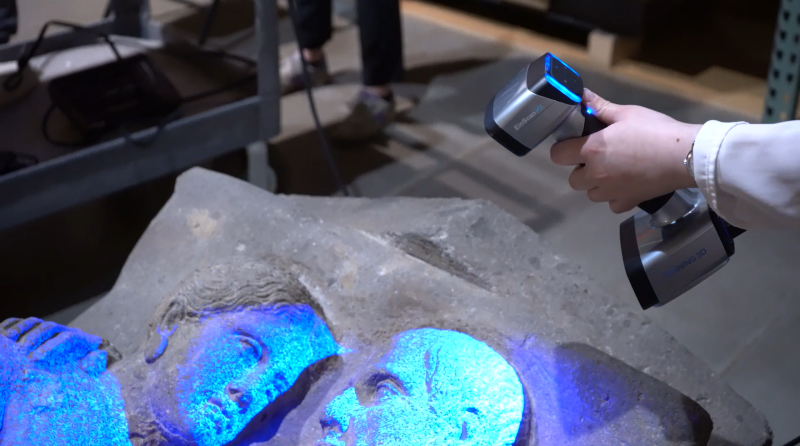
CASE STUDIES
Published on Dec. 20th 2023
Digital Archaeology at the Museum of Fine Arts: 3D Scanning Etruscan Sarcophagi
Maurizio Forte, a professor at Duke University, has been increasingly using 3D scanning for digital archeology. In this case study, we explore how he obtained 3D data of two ancient, Etruscan sarcophagi from the Museum of Fine Arts (MFA).
Maurizio Forte, a professor at Duke University, has been increasingly using 3D scanning for digital archeology. In this case study, we explore how he obtained 3D data of two ancient, Etruscan sarcophagi from the Museum of Fine Arts (MFA).
• Client: Duke University, Prof. Maurizio Forte
• Location: Boston, MA, US
• Scan objects: Two Etruscan sarcophagi
• Need: Archaeological research
• Client observations:
∘ Practical real-time 3D data visualization
∘ Fast 3D scanning processes
∘ User-friendly software and hardware
This case study is also available on YouTube:
Professor Maurizio Forte, the Dig@Lab, and the Vulci 3000 Project
With the exponential increase in modern technology, ancient artifacts can be displayed and analyzed in a whole new way thanks to 3D digitization techniques. More and more archeologists and historians have been embracing this new technology over the past two decades.
One such example is Maurizio Forte, a professor of classical studies, art, art history, and visual studies at Duke University. He directs the school’s Dig@Lab which is dedicated to digital archeology and studying how information is “shaped, elaborated, stored, and then culturally transmitted by different societies.” It is in this context that Maurizio Forte uses 3D scanning for digital archaeology.
Professor Forte also leads the Vulci 3000 project at Duke. The goal of this project is to analyze the ancient Etruscan city of Vulci in Italy and trace its evolution during Roman occupation.
To this end, Maurizio Forte recently dove into the mysteries of two captivating sarcophagi from the Museum of Fine Arts (MFA) collection:
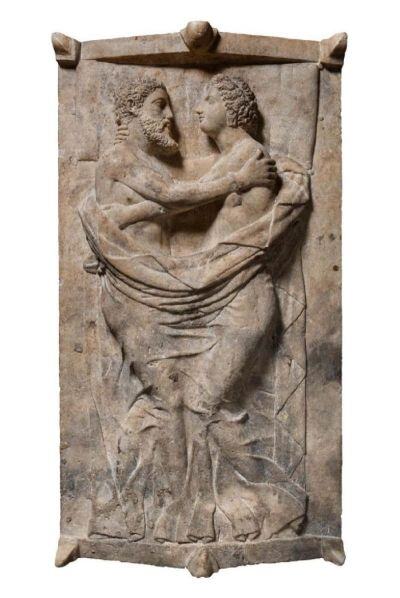
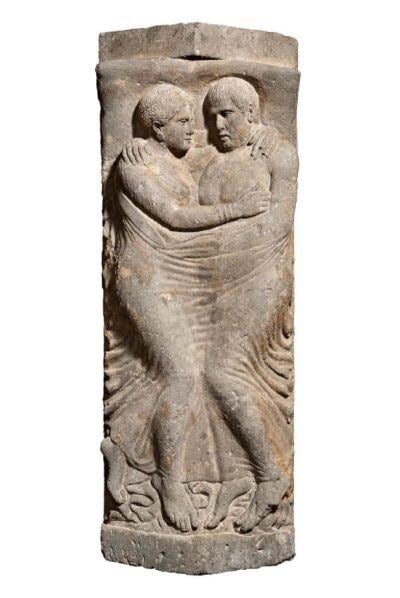
Sarcophagus 1 (933x1174x2138mm)
Sarcophagus 2
(880x730x2100mm)
See more details
These sarcophagi were unearthed from the property of Lucien Bonaparte’s widow in Vulci and subsequently sold to the MFA in 1975. Laden with historical significance, the artifacts demanded a delicate and technologically advanced approach to reveal their stories while preserving their integrity.
3D Scanning for Archaeology: EinScan Series
Professor Forte shared that his work “is always at the intersection of classical archeology and digital methods for communication, dissemination, and data capturing.”
“We usually integrate remote sensing applications, from drone multispectral with multispectral sensors or multispectral cameras and 3D modeling”, he continued. He started with laser scanning in the early 2000s and has been following the technology’s evolution ever since, noting increased efficiency and performance over time.
Today, the professor was interested in upgrading his toolset for 3D scanning in digital archaeology. He and his team’s main goal is to “design a digital workflow starting from the field and ending in virtual reality, artificial intelligence, or other systems [for sharing] all these models.”
Our application engineers thus brought along three SHINING 3D scanners from the EinScan series: the EinScan HX, the EinScan Pro HD, and the EinScan H2.

3D scanning for digital archaeology with the EinScan HX
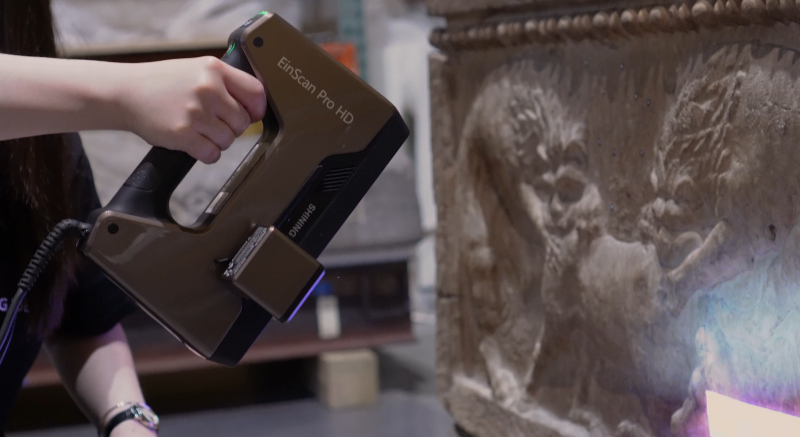
3D scanning for digital archaeology with the EinScan Pro HD
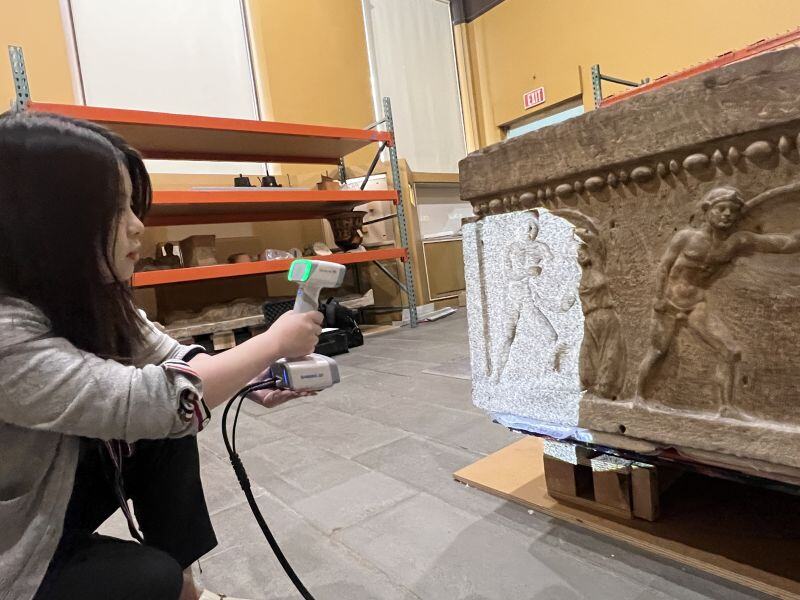
3D scanning for digital archaeology with the EinScan H2
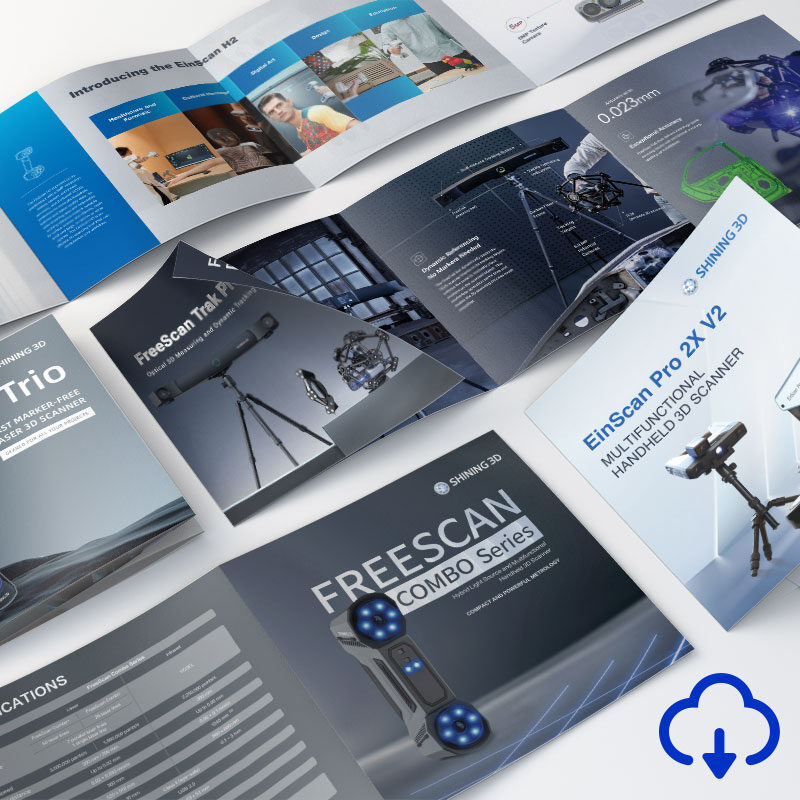
Discover the product you're looking for
- Full specifications
- Using scenarios
- Key features
- Even comes with a bundle!
After using these 3D scanners to digitize the two sarcophagi, Maurizio Forte was convinced of the EinScan series’ value on several levels:
• Real-time data visualization: This efficiency accelerates the pace of archaeological projects and enables more extensive studies within constrained timelines. “You know that you don’t waste time in a scanning session because [you see] that the signal or optical targeting is working well and that you don’t miss the tracking,” said Professor Forte.
• Intuitive process: The scanning process of the EinScan series is very user-friendly. The ergonomic design of the scanners and the easy-to-access software user interface make it easy for even beginners to navigate and learn the steps of scanning and data processing.
• Versatility: Frequently, digital archaeology requires scanners to be used in different environments, and the environmental and material adaptability of the EinScan series is well suited to meet this need. The EinScan Pro HD, for example, is able to switch between handheld and fixed scanning modes, adding flexibility.
Sarcophagus Scan Results
Each sarcophagus was scanned in two separate parts: one for the lid, and one for the coffin. We obtained some excellent 3D scanning results on both of the sarcophagi, as you can see in the images below.
The lid of Sarcophagus 1 was scanned using EinScan H2 and the body was scanned using EinScan Pro HD, the model below is the result of the lid and bottom alignment project.
3D scanning data of sarcophagi 1, using the EinScan H2 & EinScan Pro HD
We scanned Sarcophagus 2 with the EinScan HX. The high-detail model below is composed of the lid and coffin aligned projects.
3D scan data of sarcophagi 2 using the EinScan HX
The EinScan 3D scanners brought out all of the sarcophagi’s exceptional details. These historical artifacts are now going to be available for further digital analysis and digital display.
EinScan: Accessible 3D Scanning for Digital Archaeology
Maurizio Forte concludes that to him, the EinScan series offers an “affordable, accurate, and robust system.” He believes that this cost-effective and user-friendly technology is very promising for the future, adding that museums will be dealing with an increasing amount of digital recordings over the next decade.
3D scanning for digital archaeology is indeed an innovative way to preserve, analyze, and display the past. Are you a fellow researcher, archaeologist, or historian interested in digitally conserving culture and heritage?
Reach out to our specialists for a free, non-binding consultation and see how you can rebuild the past in 3D, one scan at a time.

EinScan H2
The EinScan H2 builds on its predecessor with a 5MP texture camera, improved accuracy, and three infrared VCSEL projectors, delivering more photorealistic textures and higher-quality data.
- 5MP texture camera
- 3 VCSEL projectors
- Accuracy up to 0.05 mm
- FOV up to 780 x 900mm
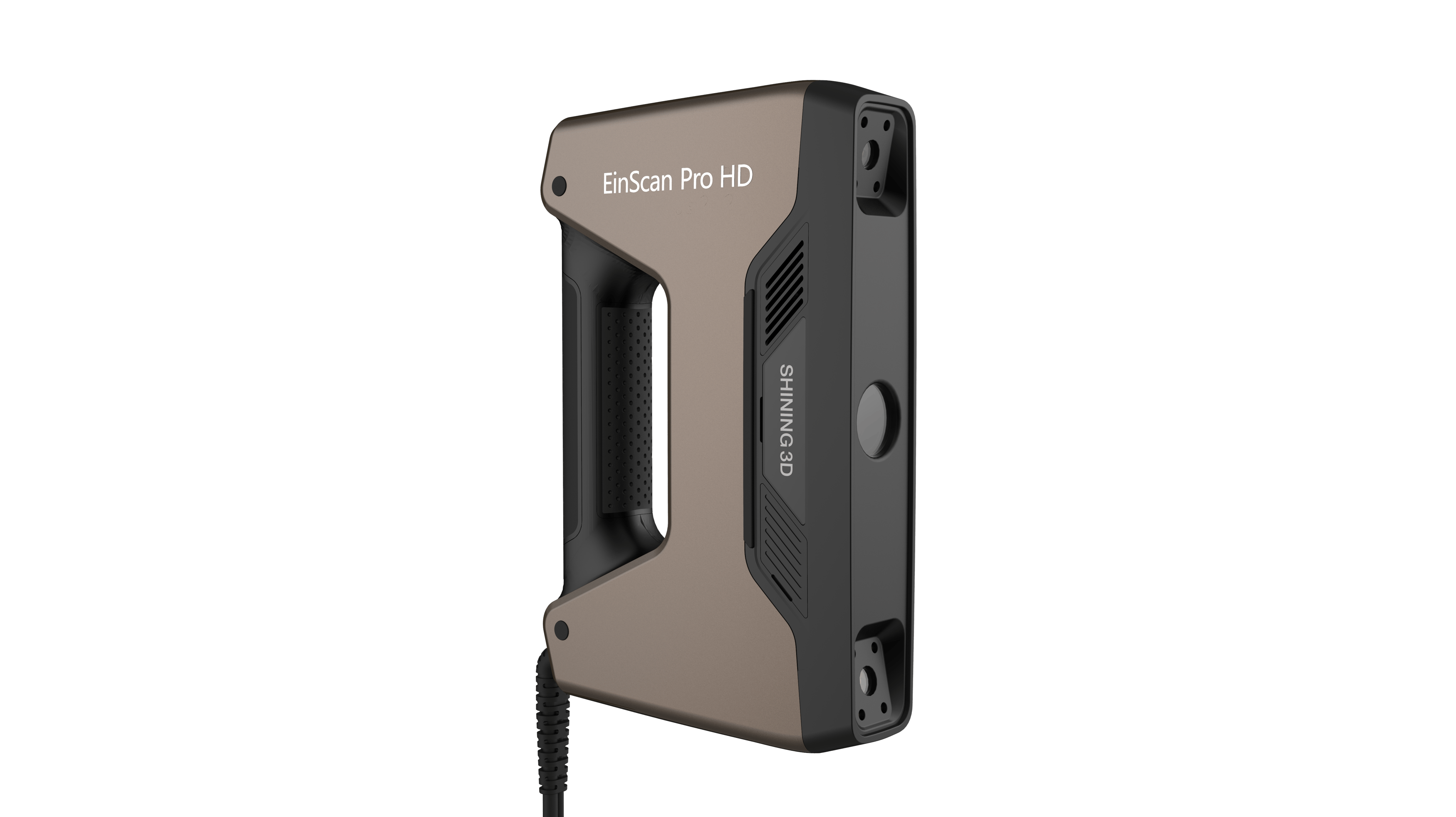
EinScan Pro HD
The EinScan H2 builds on its predecessor with a 5MP texture camera, improved accuracy, and three infrared VCSEL projectors, delivering more photorealistic textures and higher-quality data.
- Impressive high resolution and high accuracy
- Scan speed up to 3,000,000 points/s
- Handle dark and casting metal surface with less limitations
- WorldSkills designated competition model
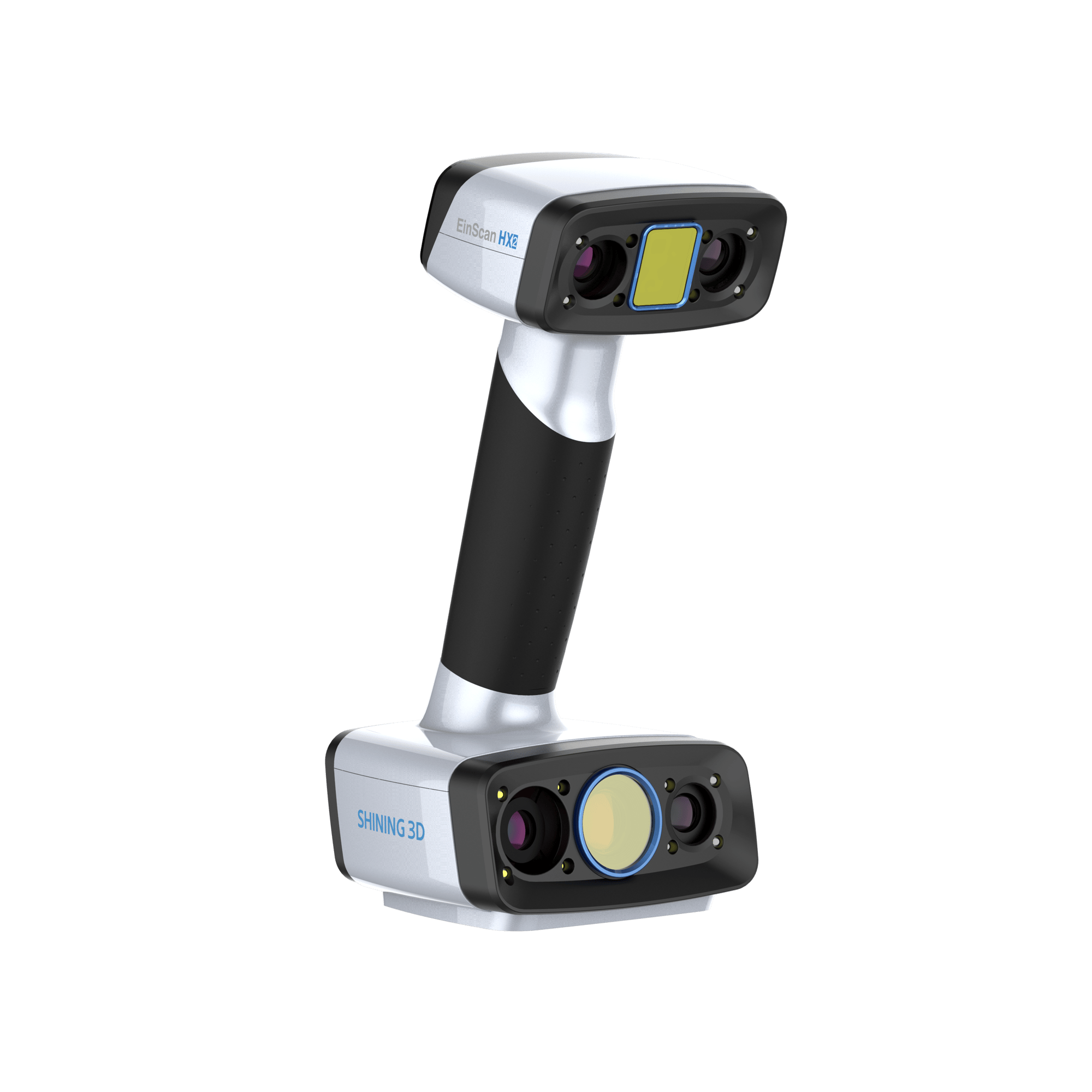
EinScan HX2
The EinScan HX2 enhances its predecessor's features, now boosting 13 crossed blue laser lines for more detailed scanning and an increased frame rate of 120 FPS for faster scanning.
- Accuracy up to 0.04 mm
- Minimum point distance of 0.05 mm
- 1,600,000 points/s and 120 FPS under laser scan mode
- Full Color
